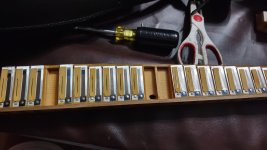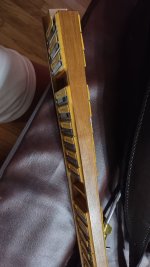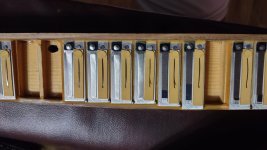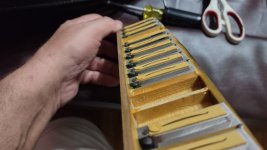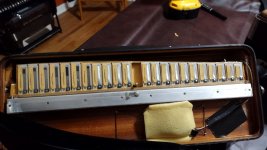Hi,
I'd like to know if you think the reeds are machined, finished, or hand made. The problem I had with taking pictures is I don't know what part of the reed you actually need to see to be able to tell, so I apologize if I didn't get it correct. Thank you.
I'd like to know if you think the reeds are machined, finished, or hand made. The problem I had with taking pictures is I don't know what part of the reed you actually need to see to be able to tell, so I apologize if I didn't get it correct. Thank you.

